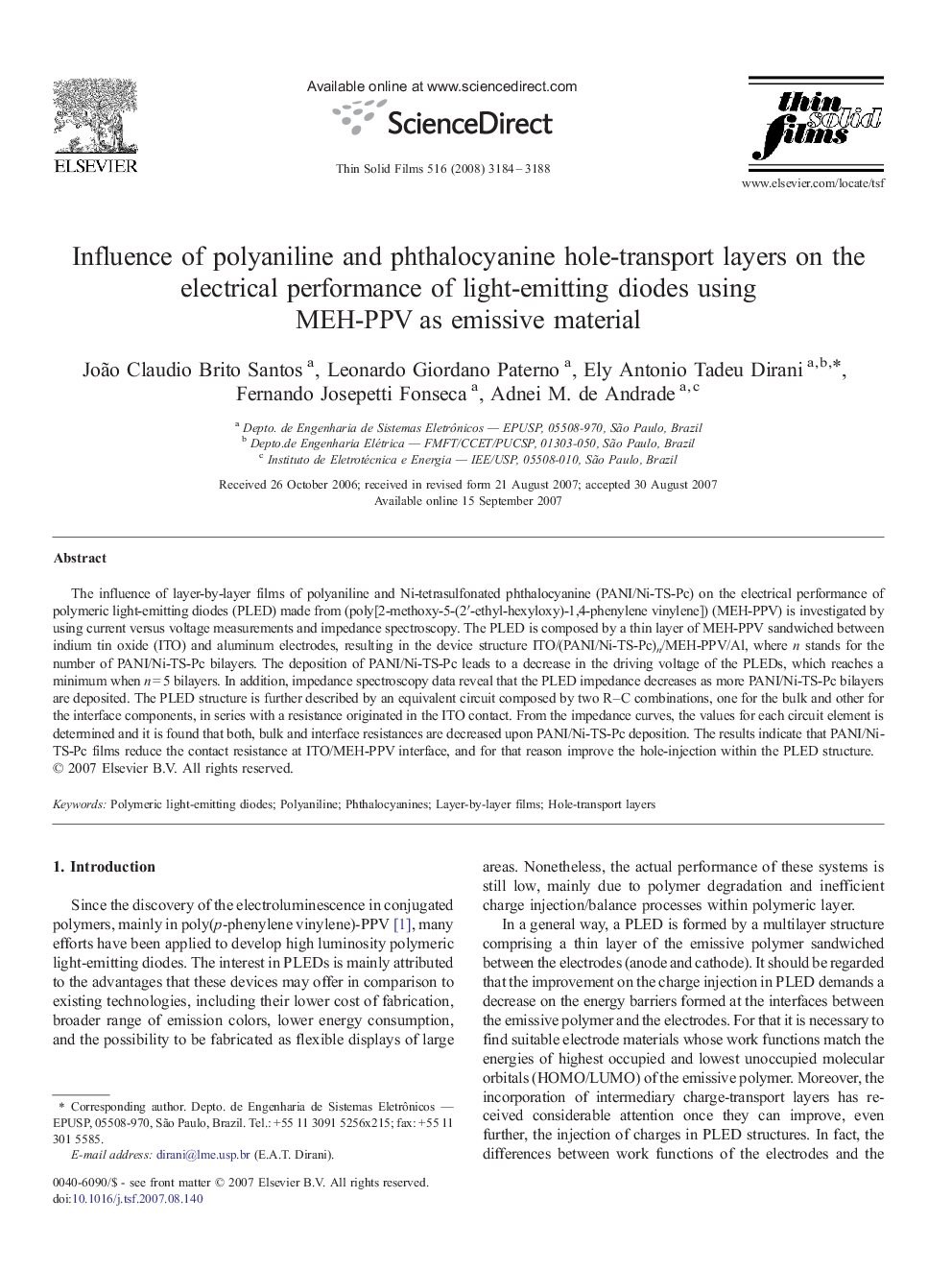| Article ID | Journal | Published Year | Pages | File Type |
|---|---|---|---|---|
| 1673469 | Thin Solid Films | 2008 | 5 Pages |
The influence of layer-by-layer films of polyaniline and Ni-tetrasulfonated phthalocyanine (PANI/Ni-TS-Pc) on the electrical performance of polymeric light-emitting diodes (PLED) made from (poly[2-methoxy-5-(2′-ethyl-hexyloxy)-1,4-phenylene vinylene]) (MEH-PPV) is investigated by using current versus voltage measurements and impedance spectroscopy. The PLED is composed by a thin layer of MEH-PPV sandwiched between indium tin oxide (ITO) and aluminum electrodes, resulting in the device structure ITO/(PANI/Ni-TS-Pc)n/MEH-PPV/Al, where n stands for the number of PANI/Ni-TS-Pc bilayers. The deposition of PANI/Ni-TS-Pc leads to a decrease in the driving voltage of the PLEDs, which reaches a minimum when n = 5 bilayers. In addition, impedance spectroscopy data reveal that the PLED impedance decreases as more PANI/Ni-TS-Pc bilayers are deposited. The PLED structure is further described by an equivalent circuit composed by two R–C combinations, one for the bulk and other for the interface components, in series with a resistance originated in the ITO contact. From the impedance curves, the values for each circuit element is determined and it is found that both, bulk and interface resistances are decreased upon PANI/Ni-TS-Pc deposition. The results indicate that PANI/Ni-TS-Pc films reduce the contact resistance at ITO/MEH-PPV interface, and for that reason improve the hole-injection within the PLED structure.
